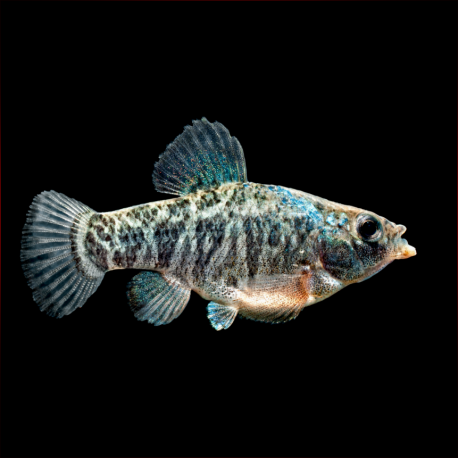Cyprinodon Variegatus
Cyprinodontiformes Print
More info
Datasheet
| Minimum Tank Size | 60 litres / 15.85 US gallons |
| Maximum Size | 5.0cm / 1.97inches |
General Description
The Sheepshead 'Minnow', scientifically known as Cyprinodon Variegatus, is a species classified under the order Cyprinodontiformes. This toothcarp species has an average size ranging up to 5.0cm.
Aquarium Setup
Setting up an aquarium for the Sheepshead 'Minnow' does not require significant complexity, needing ample broken lines-of-sight. The tank should offer coverage in the form of aquatic plants, wool mops, etc. It is recommended to use air-powered, sponge-type filtration units to ensure the safety of eggs and fry. While lighting in the tank is not crucial, it can be included if desired. Additionally, promoting the growth of filamentous algae is beneficial.
Behaviour
This species thrives in brackish to hypersaline environments, predominantly inhabiting areas such as coastal salt marshes, lagoons, and estuaries. The Sheepshead 'Minnow' displays intriguing behavior and has been observed engaging in specific resource exploitation, often alongside other species, showcasing remarkable morphological adaptations.
Feeding and Diet
The Sheepshead 'Minnow' is known to be an omnivorous species. Its diet typically consists of a variety of food sources including algae, aquatic invertebrates, and small crustaceans. In a controlled aquarium environment, a balanced diet with a mix of live, frozen, and flake foods is recommended to ensure proper nutrition.
Reproduction & Dimorphism
Reproduction in the Sheepshead 'Minnow' involves egg-laying, with females depositing their eggs amidst vegetation or substrate. Males of this species may exhibit colorful traits during the breeding season, displaying slight dimorphism when compared to females. The breeding process is essential for the continuation of their species.
Habitat and Distribution
The Sheepshead 'Minnow' species has a widespread distribution, ranging from Massachuttsets in the northeastern U.S.A. down to northeastern Mexico, the Bahamas, and the Antilles, with occasional sightings in Venezuela. Their preferred habitats include coastal salt marshes, lagoons, estuaries, and other brackish to hypersaline environments where they can thrive.

